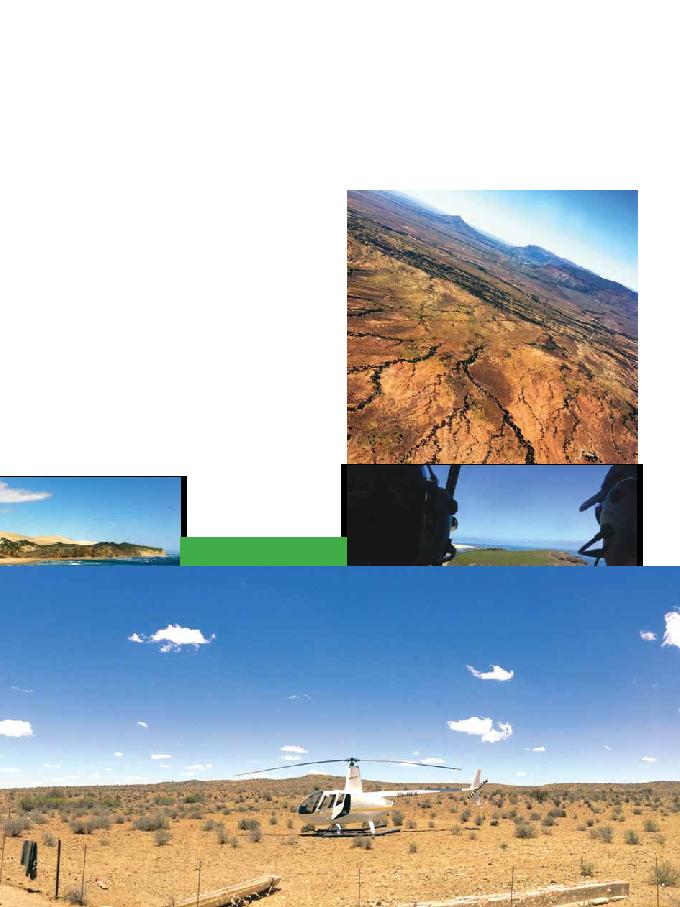
volve the actual refuelling station at
each airfield and whether it is fixed
or mobile, in turn, determining how
the aircraft are parked for maximum
efficiency and the least amount of
time spent repositioning aircraft.
Accommodation and
Landing Zones:
When arranging accommodation,
ideally find a place at which you
can land to eliminate the need for
taxis or other transport to and from
lodgings. In advance, call the lodge
and ask them to describe the area,
valley, hill or flat, the size of the field,
slope and surrounding terrain. This
will determine how much power you
will require and how much fuel you
should be carrying. Where there is no
designated runway and a field or piece
of open ground has been offered as an
LZ, treat it as a confined landing and
follow the full procedure. Pay very
special attention to wires. The first air-
craft in will be responsible for alerting
the others about potential hazards
Radio Procedures:
Of all the planning, radio can be the
most daunting, simply because you
do not know the area or the local
reporting features. Like every other
aspect, find out ahead of time so that
you are prepared for both the unfa-
miliar names and where they are in
relation to your track. When you are
taken by surprise with a half-heard
place name and you are scrambling
to find it on a map, radio work will
quickly dissolve into the realm of the
unprofessional. Phone the relevant
ATNS tower, explain that you are
a stranger, write down the whole
procedure with frequencies and
reporting points and mark it on your
map. Think about what you intend
to communicate before you press the
PTT. For inter-group chatter, always
use the chat frequency 123,45.
Crew:
When flying with a group of pilots on
a roster system, it is always a good
idea to talk about and table the rules
regarding Pilot-in-Command before
the flyaway commences. There is
always a natural tendency for less
experienced pilots to look to the more
experienced pilots to make decisions,
which is counter-productive as the
purpose of the exercise is to develop
decision-making skills. An effective
solution is a group policy to respect
the flying pilot, who will make the
decisions, but who may call on the
other pilots for advice or help as he or
she sees fit.
General:
Flying is a most unforgiving exercise
and if something occurs that you
did not anticipate, you have a good
chance of reacting from an unin-
formed position, and that can be
extremely dangerous. Know the lim-
its of your aircraft and know exactly
what will happen if you exceed these
limits. Be aware what aspects of your
flight are likely to bring you close to
the limits, be it on a hot, heavy take
off or while crossing the mountains,
and have a contingency plan.
Safety, professionalism and solid
decision-making come from being
prepared and using that preparation
to anticipate each step, staying ahead
of the aircraft and making informed
decisions continually. Planning
is everything.
Five helicopters, a total of 91
flying hours and not one mechanical
snag. No lost pilots and despite
the weather, everybody made each
night stop safely, as planned. A
truly excellent trip, with great team
spirit and, above all, an unbeatable
learning experience. ·
Far Left: Team BAC at Wavecrest.
Left: PE to EL Coastwise.
Top Right: Hundred Mile Vis near
Graaf Reinet
Right: View from the Driving Seat
(Kenton-on-Sea).
Below: Swimming in the Middle of
Nowhere (near Lainsburg).
www.bachelicopters.com

